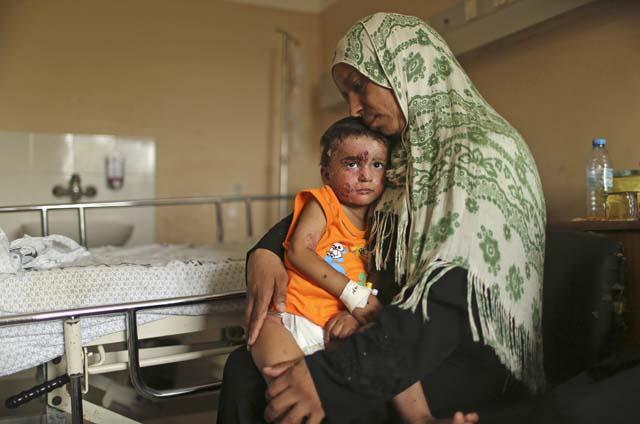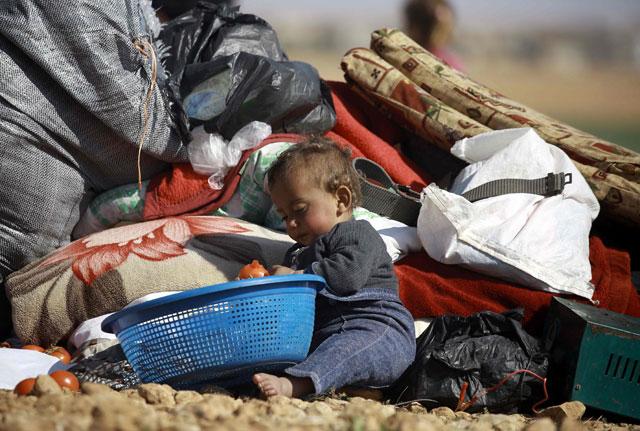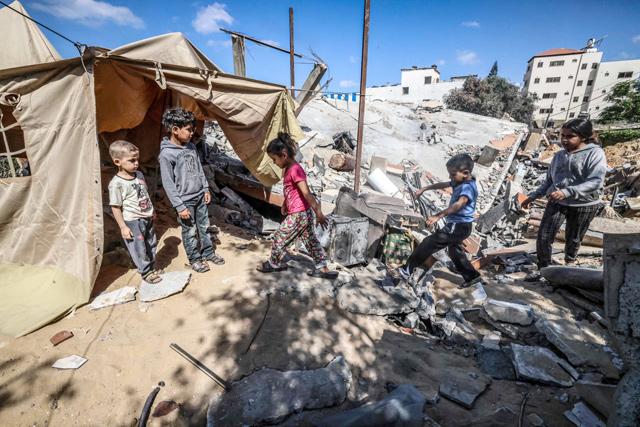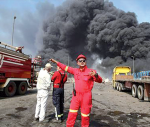You are here
Gaza children ‘emotionally shattered’ one year after conflict
By Reuters - Jul 06,2015 - Last updated at Jul 06,2015
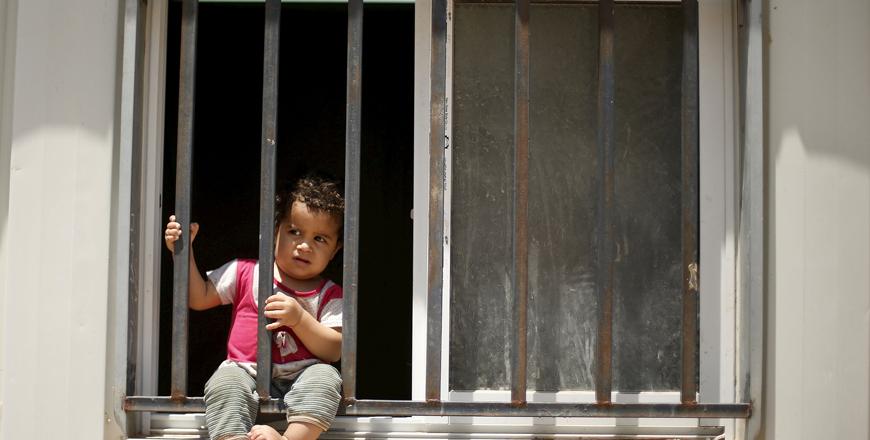
A Palestinian girl, whose family house was destroyed by what witnesses said was Israeli shelling during a 50-day war last summer, looks out of a makeshift shelter in Beit Hanoun in the northern Gaza Strip on Monday (Reuters photo by Suhaib Salem)
LONDON — The majority of children living in areas of Gaza hardest-hit during last year's conflict are showing signs of severe emotional distress and trauma, including frequent bed wetting and nightmares, a global children's charity said on Monday.
A ceasefire last August ended 50 days of fighting between Gaza fighters and Israel, in which health officials said more than 2,100 Palestinians, mostly civilians, were killed. Israel put the number of its dead at 67 soldiers and six civilians.
Israeli air strikes and shelling hammered the densely populated Gaza Strip, dominated by the Islamist Hamas movement, causing widespread destruction of homes, schools and other buildings.
Hamas and other groups launched thousands of rockets and mortar bombs from the Palestinian enclave into Israel.
Some 551 children were killed in Gaza and 3,436 were injured during the conflict, while an estimated 1,500 lost their parents, according to a report by Save the Children.
More than 70 per cent of children in the worst-affected areas of Gaza suffer from regular nightmares and bed wetting and live in fear of further fighting, while half do not want to attend school because they are afraid to leave home, the charity said.
"We saw our home being destroyed. I was crying because we have memories and dreams there, from the day of our birth. My memories, pictures, clothes, toys ... everything is gone. I can't live, I only feel pain," a 12-year-old girl told the charity.
Mental trauma
Homelessness and repeated exposure to violence, coupled with soaring unemployment for parents and limited mental health support, have prevented children from recovering from the mental trauma of war, according to Save the Children.
Around 100,000 people in Gaza are still homeless a year on from the conflict, while major reconstruction of health facilities, water networks and schools has yet to begin, the charity said.
Israel imposed a blockade on the Gaza Strip after the Islamist movement Hamas won power there in elections in 2006, and the flow of reconstruction materials into the territory has been greatly restricted since the end of the 2014 conflict.
So slow has the influx of goods been that the United Nations last month said it could take 30 years to repair the damage.
The continued blockade and threat of renewed conflict has made it difficult for children in Gaza to live normal lives, according to Save the Children.
"Many children in Gaza have now lived through three wars in the past seven years, the last one notable for its brutality. They are emotionally and, in some cases, physically shattered," Save the Children CEO Justin Forsyth said in a statement.
Of the 1.8 million people living in Gaza — a population growing by 50,000 a year — nearly two-thirds are dependent on aid in some form or another. It is the United Nation's longest-running relief operation, set up in 1949.
Related Articles
In a ward at Shifa, Gaza's largest hospital, child therapist Rabeea Hamouda is trying to elicit a response from two small brothers, Omar and Mohammed, aged three and 18 months, hoping for some words or perhaps a smile.
BEIRUT — Six years of violence and bloodshed have spawned a mental health crisis among Syria’s children whose impact will be felt for decade
GAZA CITY, PALESTINIAN TERRITORIES — When an Israeli air strike targeted a security office near her home in Gaza this month, 10-year-old Zei


